KATOxVictoria's "Sprouting City Blocks" - Runner-up for Europan Denmark, Copenhagen
By Bustler Editors|
Tuesday, Jan 7, 2014

Related
Our Europan 12 featured entry for today is "Sprouting City Blocks" by KATOxVictoria, a Copenhagen-based design office founded in 2011 by architects Hiroshi Kato and Victoria Diemer Bennetzen.
The young Japanese-Danish firm's entry — which was designed for the Vesterbro district in the competition's Copenhagen site — won the runner-up award in the latest Europan Denmark.
You can check out the details of their proposal below.
Project description:
"Each district of Vesterbro has its treasure, a character trait, a crooked room, a curved facade, a blind gable overgrown with ivy. Skydebanegade its small street spaces, Sonder Boulevard its curved green sequence. All these treasures are not immediately recognizable qualities on a map, but possesses a peculiar charm and attraction and gives its territory a distinctive atmosphere.
The project Sprouting City Blocks are based on a Situationist urban perception and recognizes all these sense experience as essential strategic elements to tie together areas in a joint identity. This project points to Dybbølsagade as the treassure of this study area. This place has the potential to bring together the neighborhood’s residents and create a common external identity."
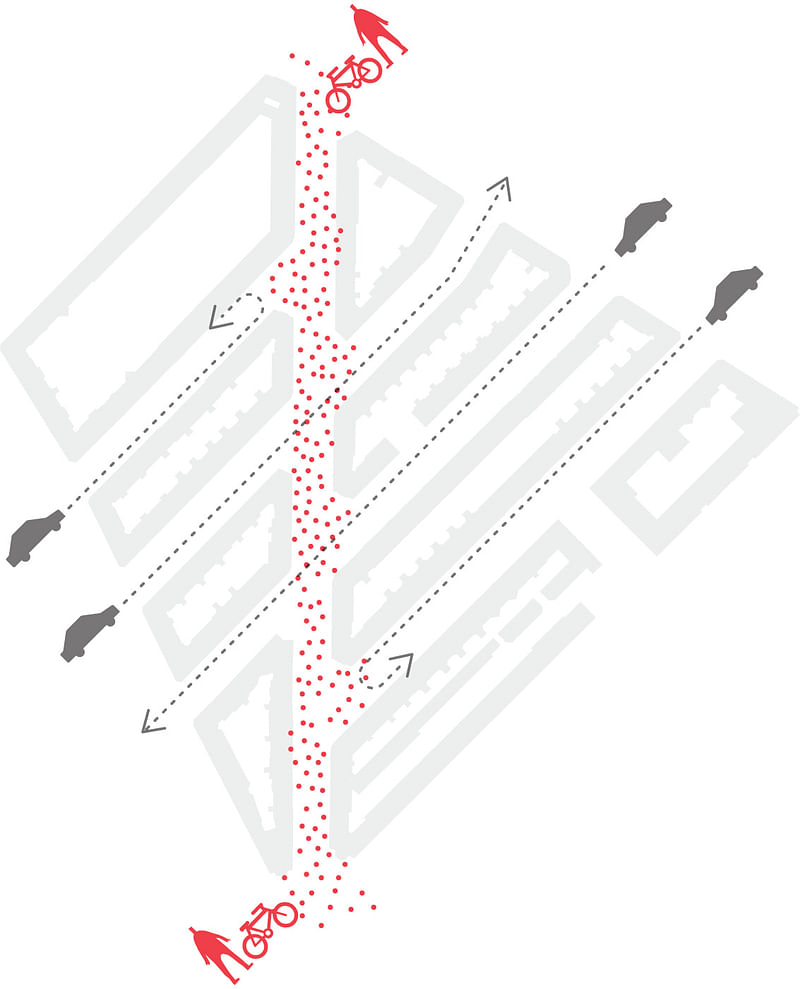
"TRAFFIC - As the first step in realizing Sprouting City Blocks Dybbølsgade is closed to all vehicular traffic, Esbern Snare Street and Sommedstedgade are converted into blind alleys and Krusågade and Godsbanegade are one way.
GREEN MAIN STEM - The new Dybbølsgade become a green strole with a central bike path, green islands along k the city blocks facades and plazas in the old intersections. Initially, the pavement is retained on Dybbølsgade as it is. Sidewalks still functions as the rapid distribution path from point A to B."
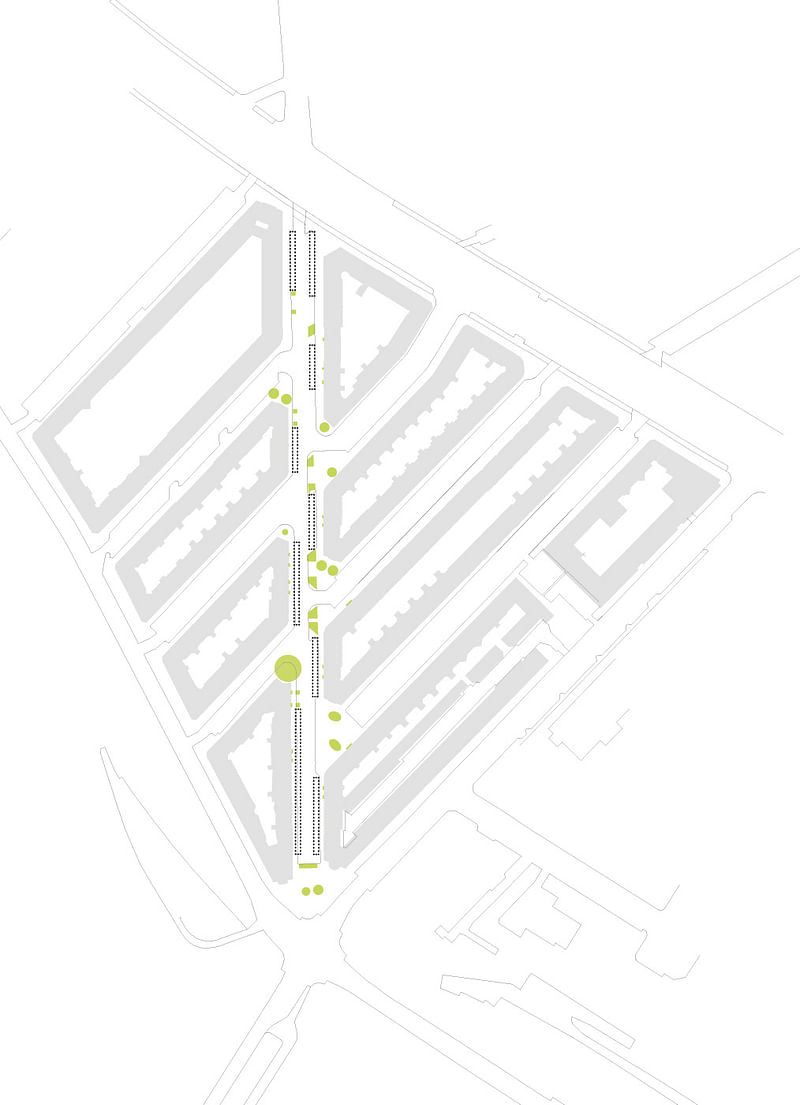
"A central bikepath is accentuated with a colorful coating or slightly raised from street level on a light construction. In the pockets between the bike path and the sidewalk where the cars used to park land is released for temporary gardens and constructions such as kitchen gardens, hammocks islands, outdoor kitchens, sitting areas with night lighting, rain lakes etc.
By introducing “semi-private” garden pockets at people’s homes a sense of ownership is created and the inhabitants will follow up with on what the neighbors, for this joint development area."
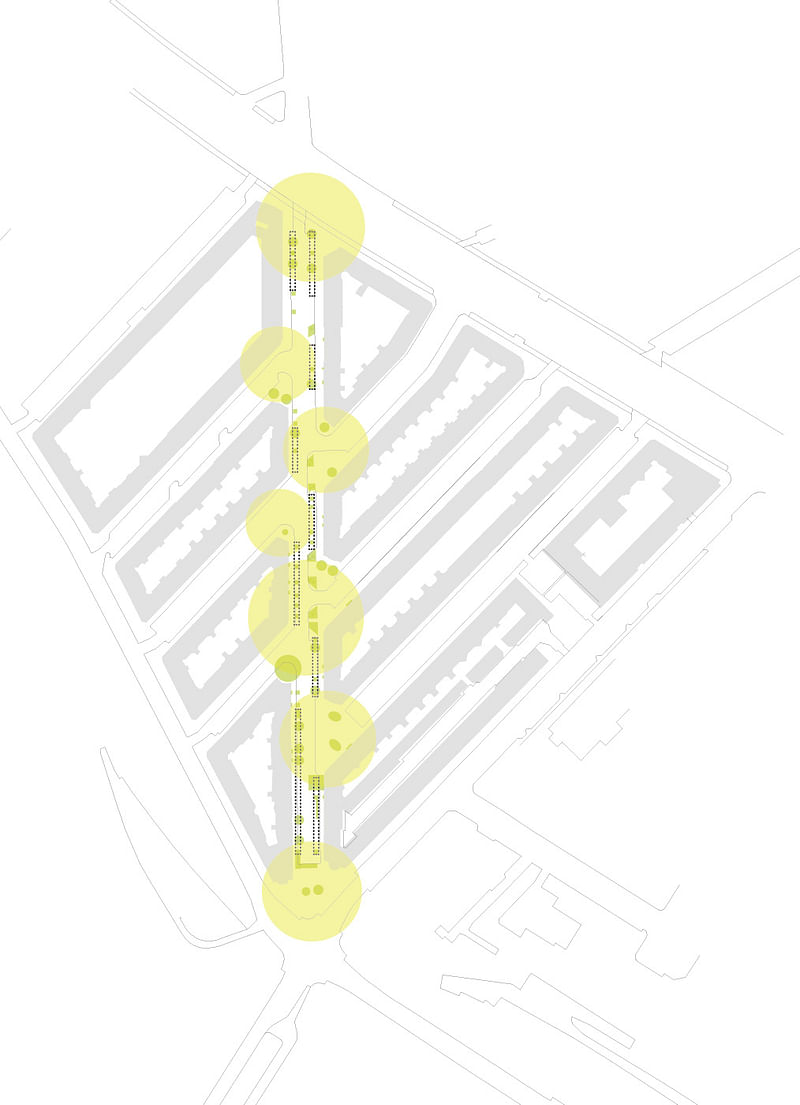
"LOCAL SPROUTS - During the first phase local treassures and initiatives are collected and mapped so that they are activated in the location and layout of the new green pockets.
LIBERAL SPROUTS - Professional businesses like cafes and bike shops should have wider opportunity to use backyards for dispensing or storage / workshop. In this way the public will be invited to the private courtyards in a controlled extent and duration."

"SPROUTING DYBØLSGADE - In the longer term Dybbølsgade will appear as a neighborhood bound together by green without a dedicated front / back. After a few years of temporary front gardens, each house will choose to invest in just the coating and the features to suit their local situation in relation to what their neighbors offer, their own yard space, positions in relation to sun and wind and traffic etc."

"EMERGING COURTYARDS - The blocks around Dybbølsgade is built up of small rigid apartments and frame cramped deep courtyards. What can we share here when we have so much more than a view from your window?
When you look at the plans of a cityblock you will find a lot of staircases tucked inside the building. The concept Emerging Courtyard imagine that these stairways be more than just empty distribution ways but also carry light, air and greenery with them into the apartments. Combine the main staircase and kitchen stairs together and transform this into an outdoor space as an extension of the inner courtyard. It’s like cutting city block into the small towers."
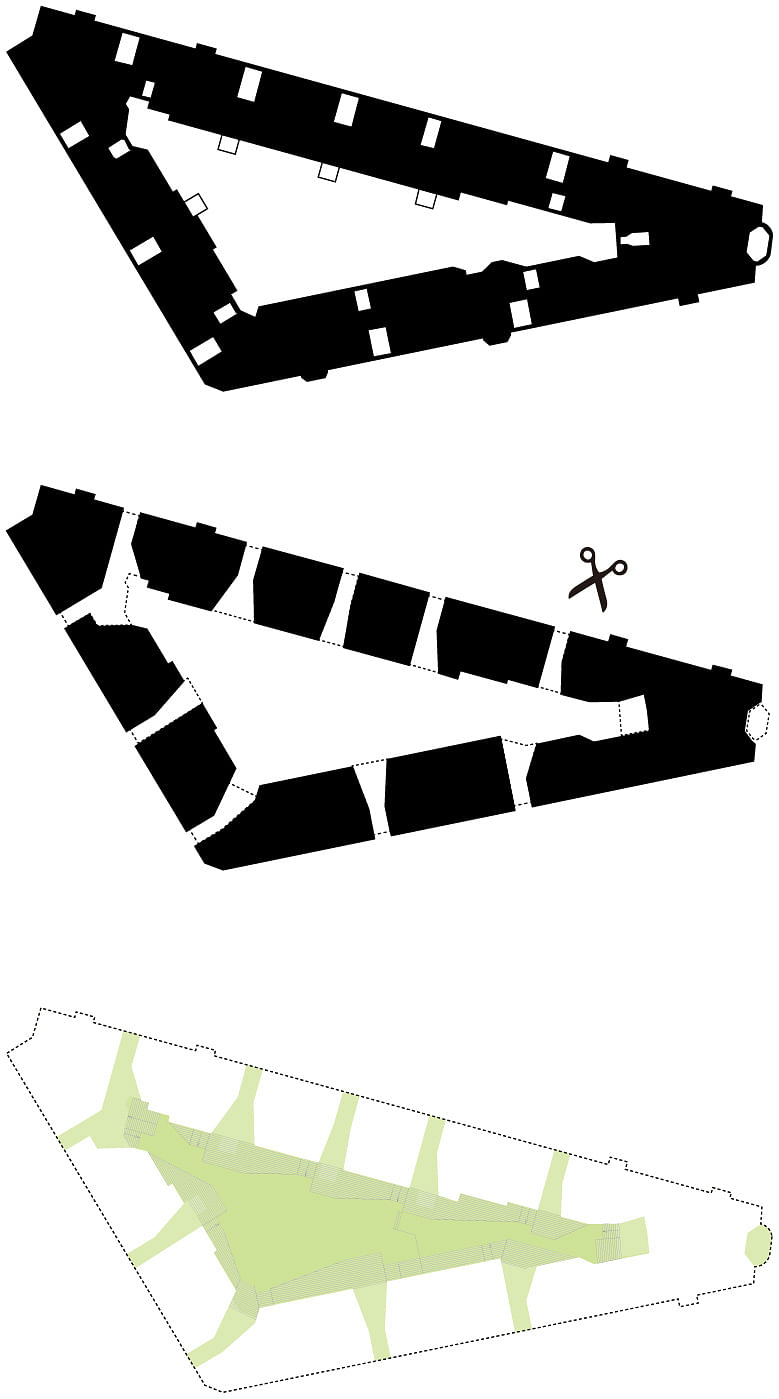
"From the inside the courtyard is extended out to the street in public free space. From the outside the facade remains intact, but behind the stairwell windows, light is puring into the street and ensure intimate views from the street into the private terasses and courtyard.
Finally, a more open relationship between the courtyard and the green front yards is created. The main doors are replaced with glass or grille doors. And greens are floating effortlessly and visible between the private and public spaces. The decisionproces mimes the well-known balcony projects where teach house agree to invest in terrace staircase"

"OPEN, BRIGHT AND FLEXIBLE HOUSING - How can an apartment in Vesterbro be small without being a compromise? How to create varied sizes of apartments without lowering the number of houses and residents? Each apartment now has at least one shared terrace and several new window openings facing at least 3 corners of the world. Covered outdoor spaces dissolve the feeling of being trapped in an apartment and one’s private space continues outside as a small house with a garden.
This also provides space for new flexibility in relation to the division of the apartments and the use of additional partitions that were previously limited by the sparse amount of windows. Covered outdoor areas ensure a quality and an opportunity to put a personal touch to the space around your home. This gesture lifts the small studio apartment or a large family apartment up to new levels of quality, light and airy “bridge district” homes."
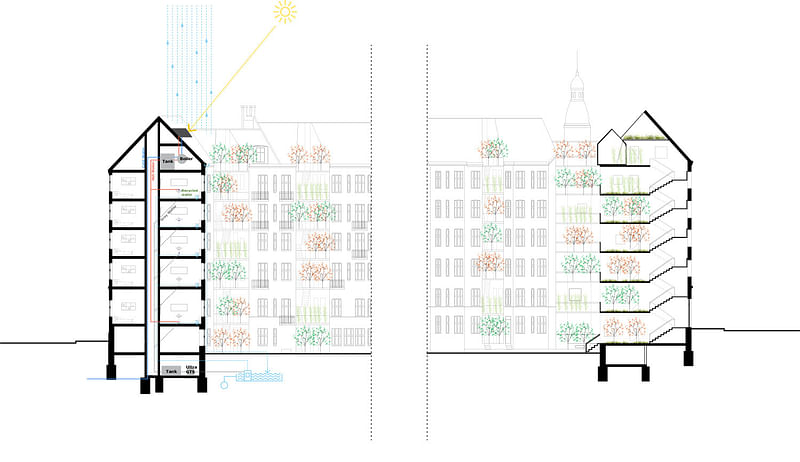
"SUSTAINABILITY
Rainwater and gray water reuse system - This system benefits in cost savings by recycling the water, that otherwise would go to waste. It reduces the need for imported water, while optimizing the energy usage and adapts the climate of Copenhagen by creating advantageous solutions for the water runoff.
Solar Panels - We will acquire lower energy consumption by installing solar panels on the top of the green roof, which will lower the electricity bills for the residents."
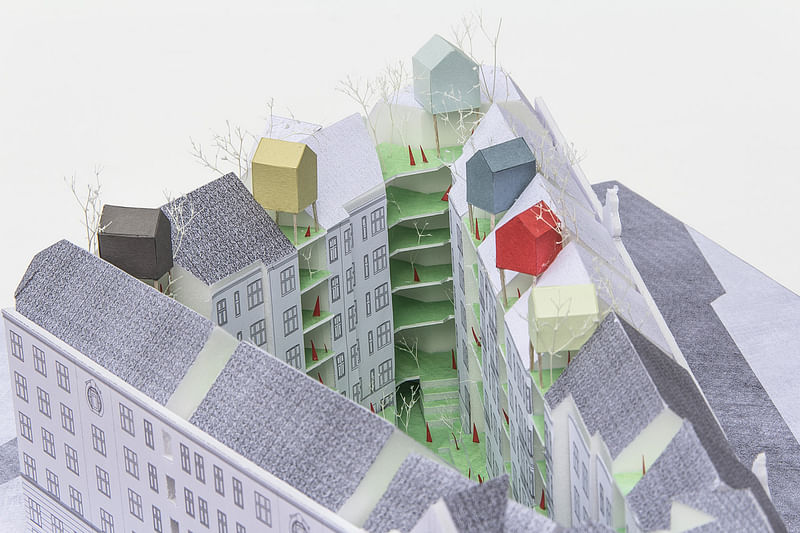
"Green Roof - It increases the roof life expectancy and reduces CO2 level in the city. Green roof will cool the building in the summer and insulate it in the winter, therefore it’s a great energy optimization investment. The water, that is stored in the substrate is returned to the atmosphere by the plants in the transpiration and evaporation process, which will integrate the building into the city with a symbiotic aspect.
Mechanical Recovery Ventilation System - By installing a cross flow heat exchanger with heat recovering we will recover up to 60-70% of the exhausted air, which will make a highly efficient indoor climate of the building and promote efficient energy use by reducing the heating and cooling costs."
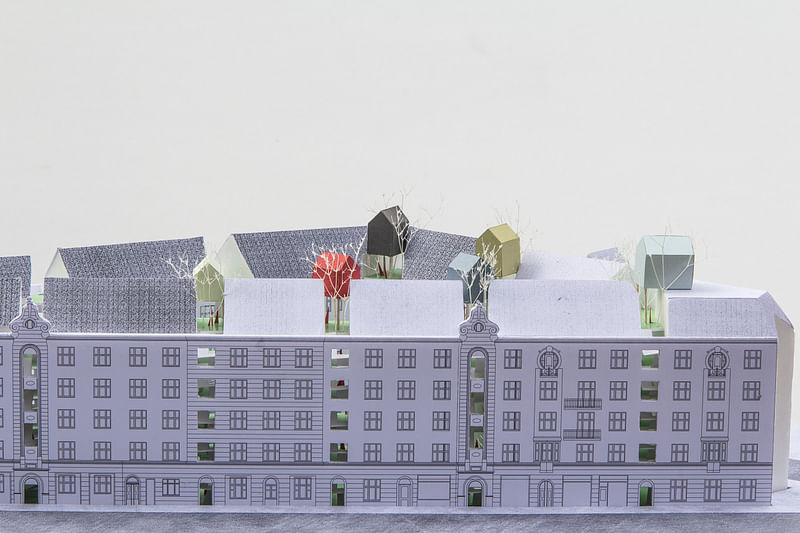
Images courtesy of KATOxVictoria.
Click the thumbnails below to see additional images.


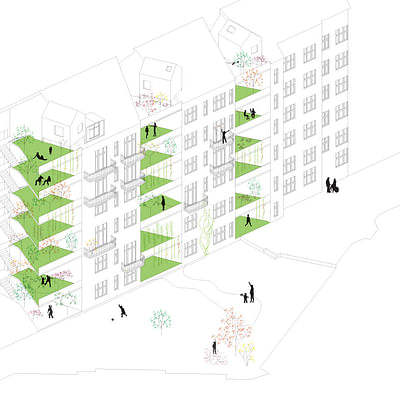
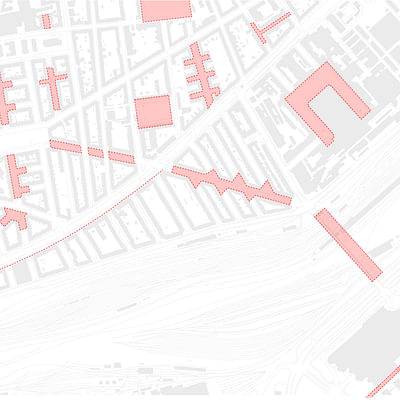

Share
0 Comments
Comment as :